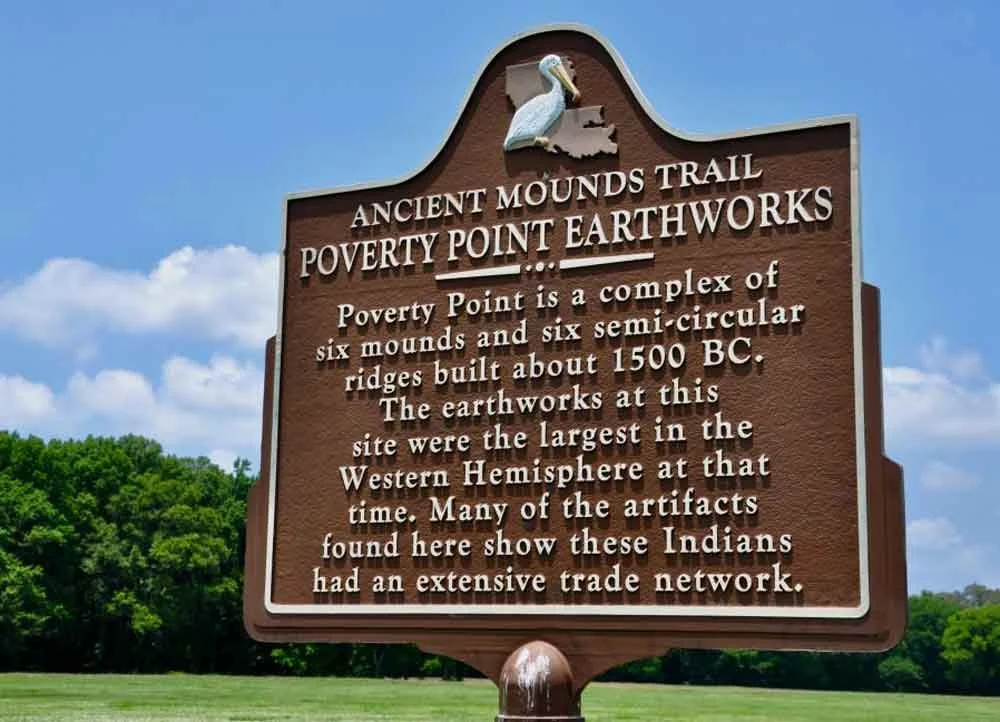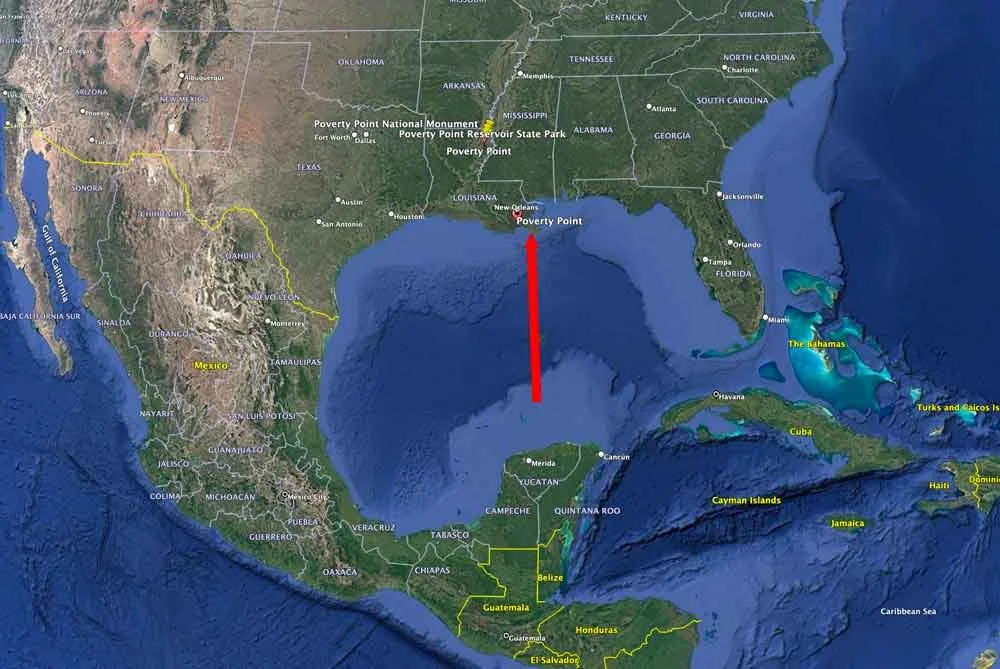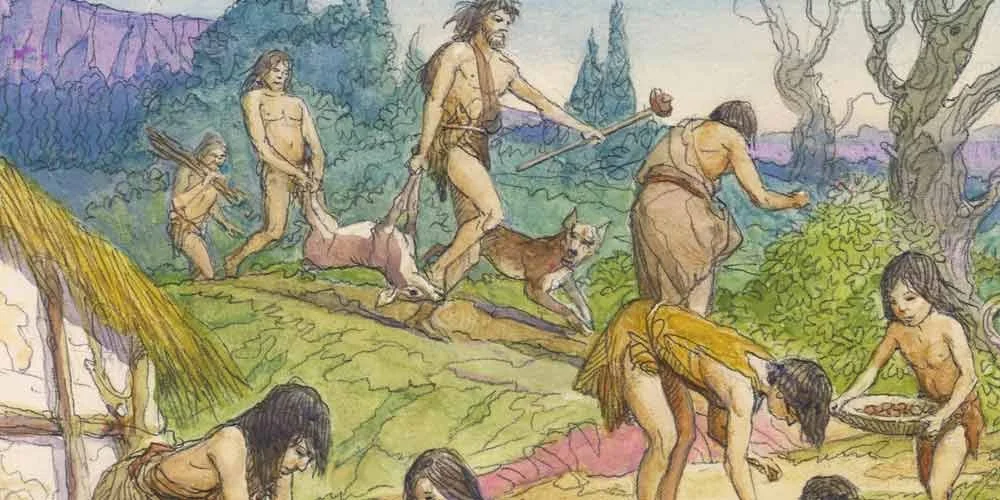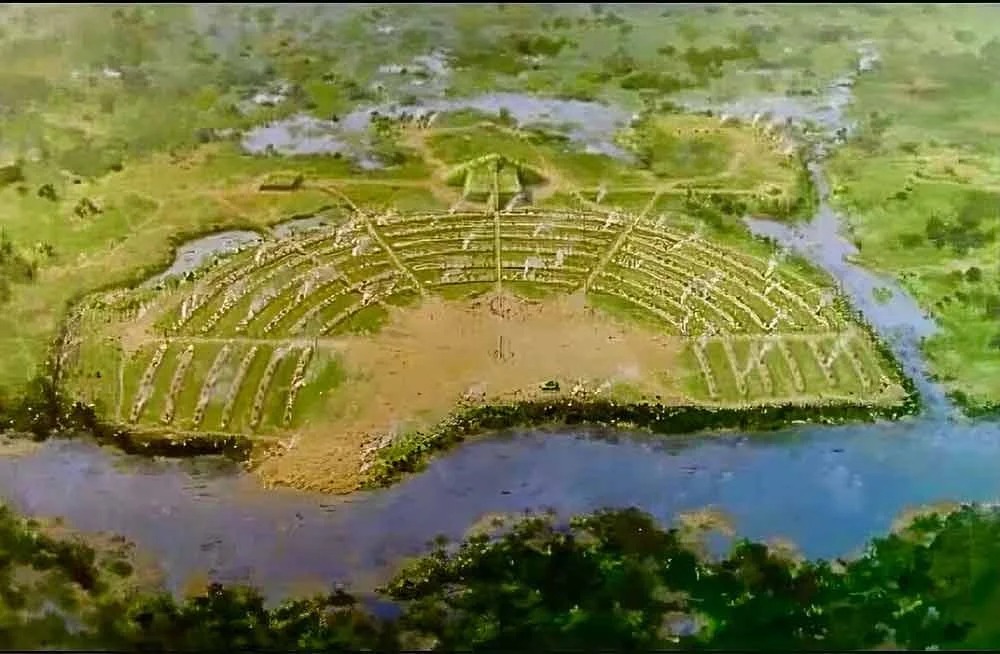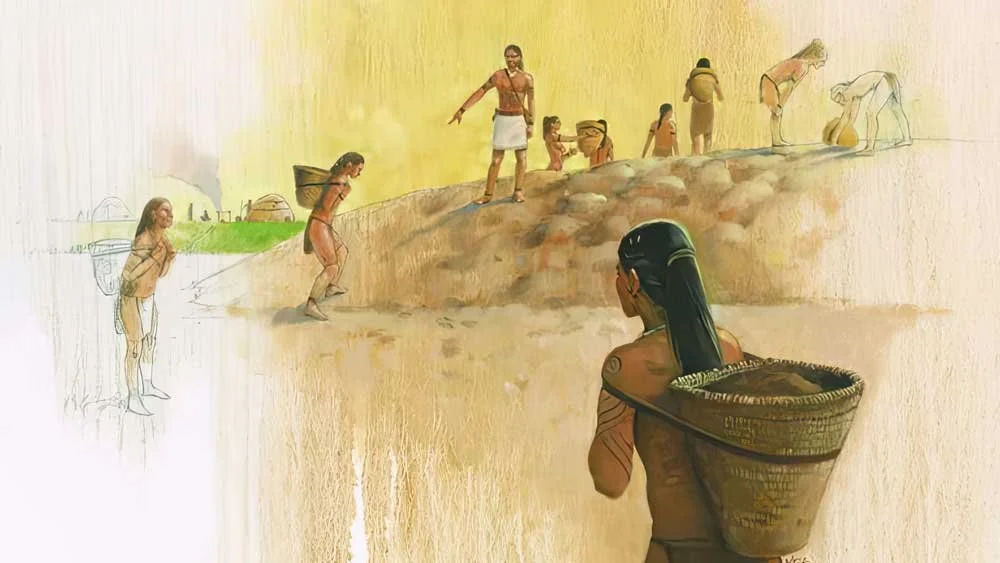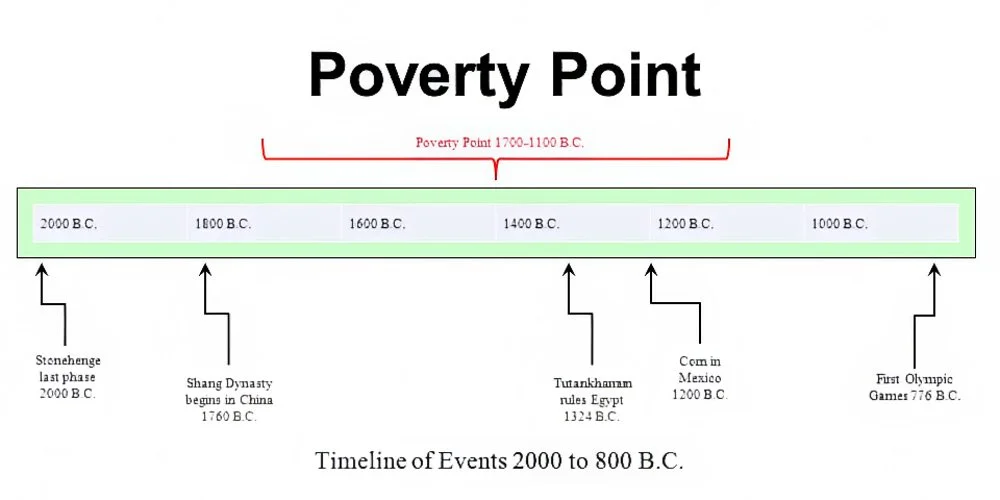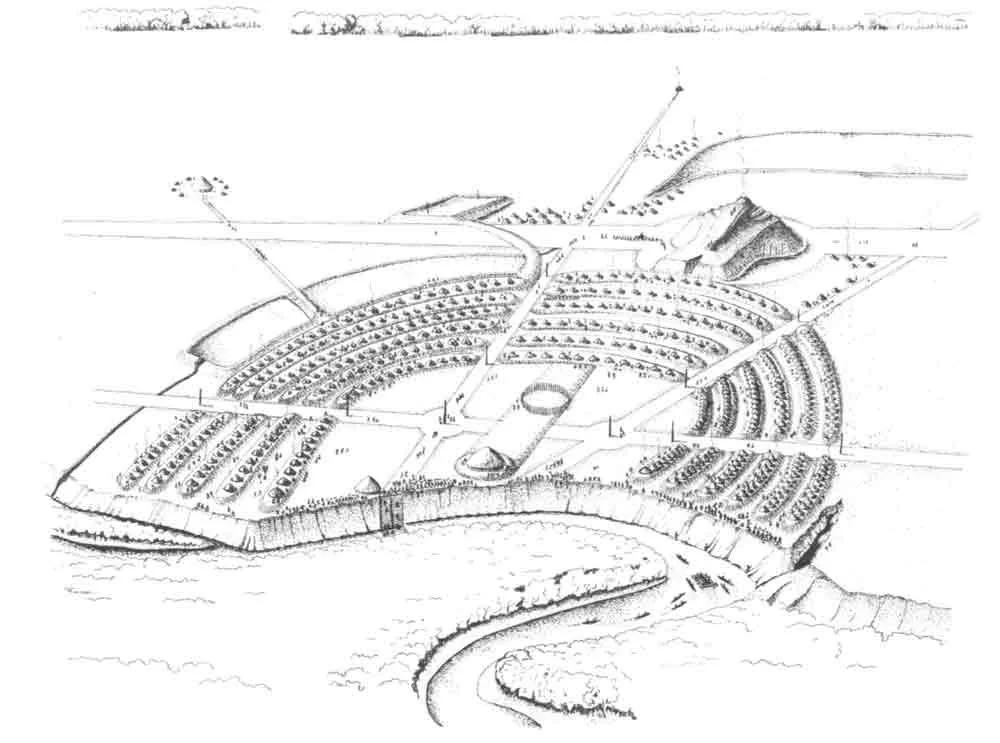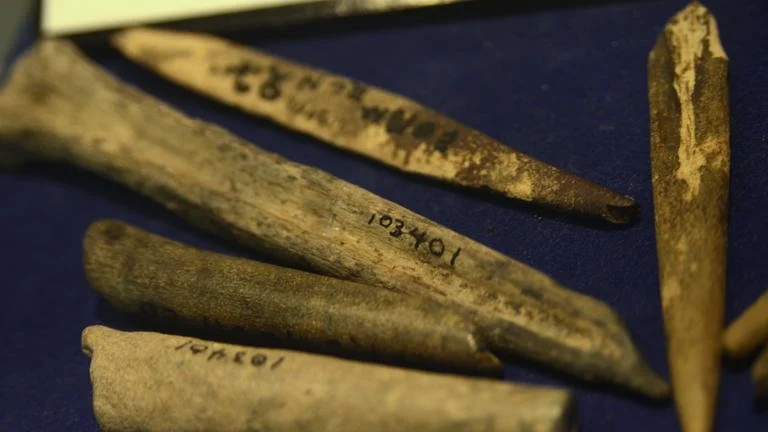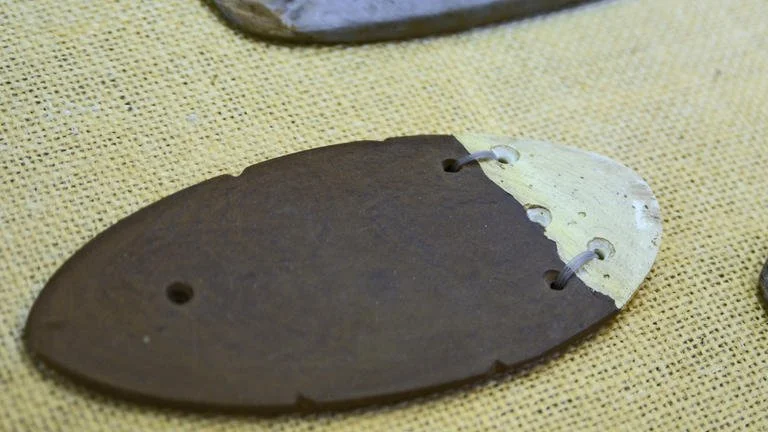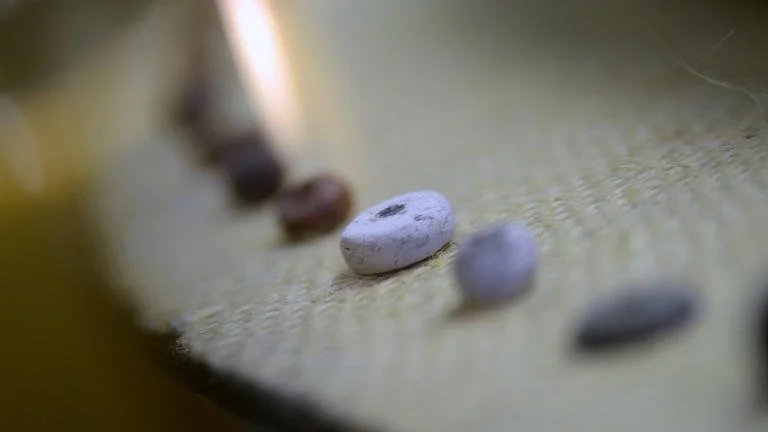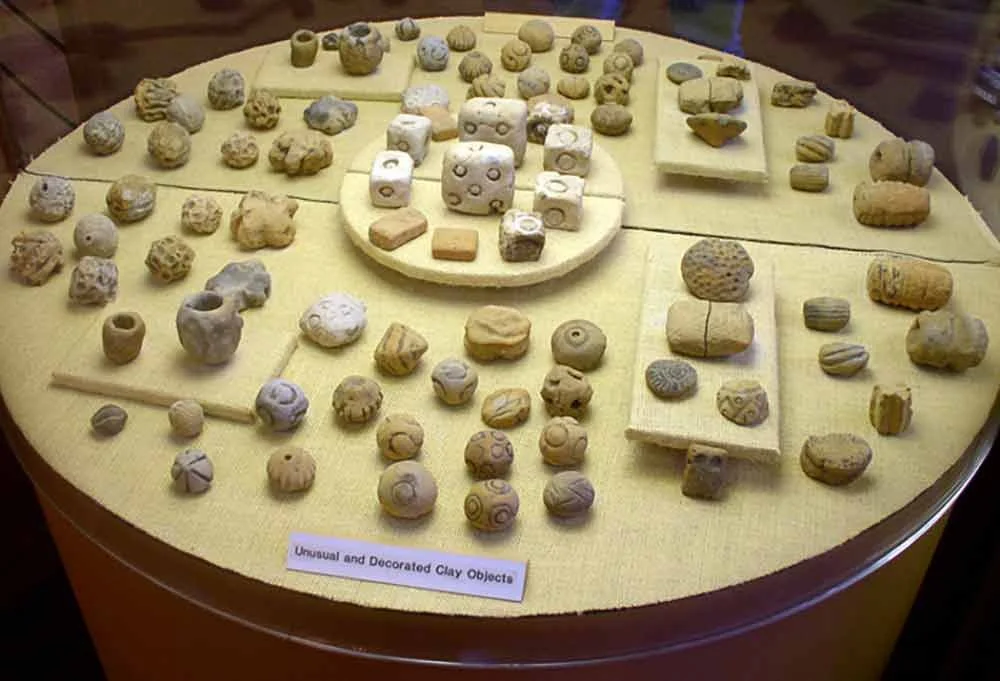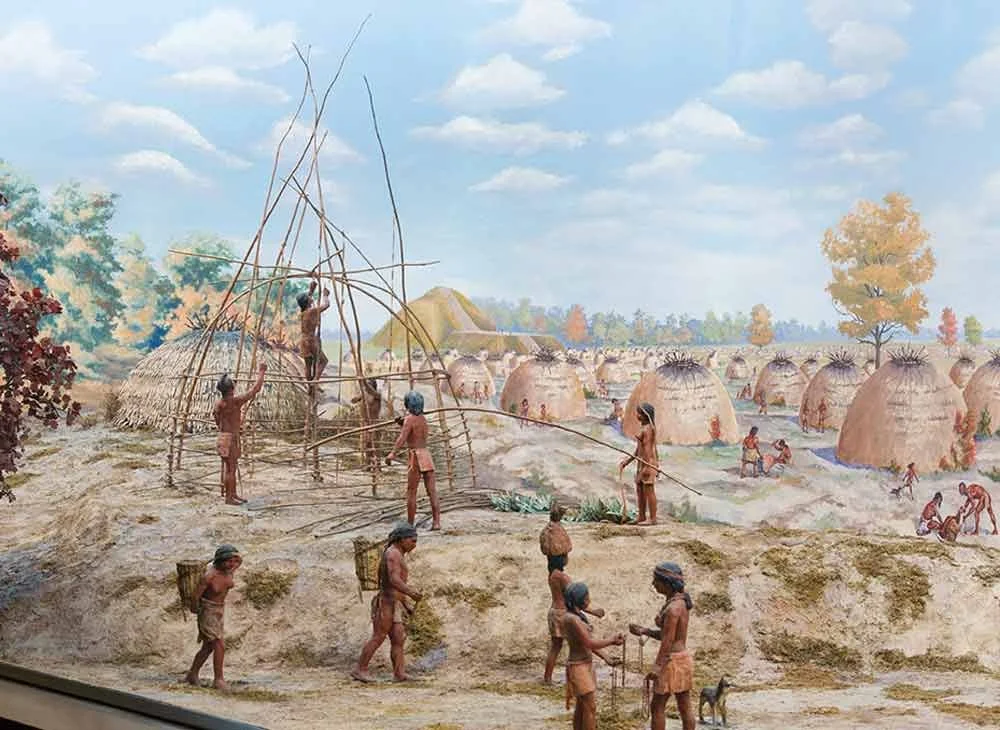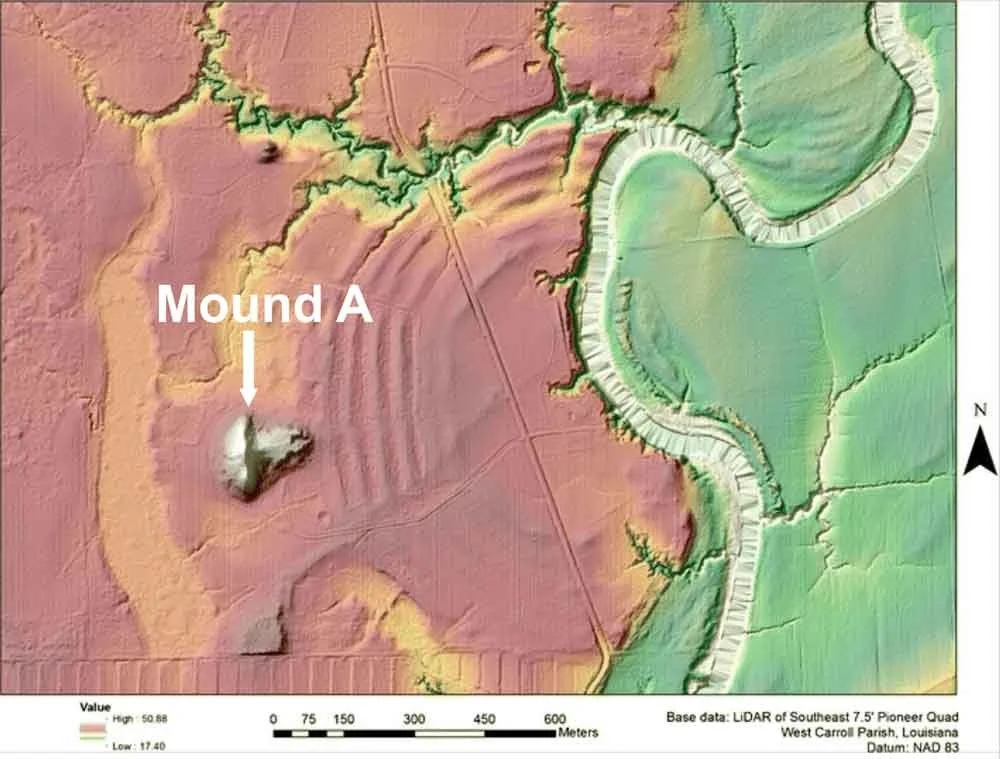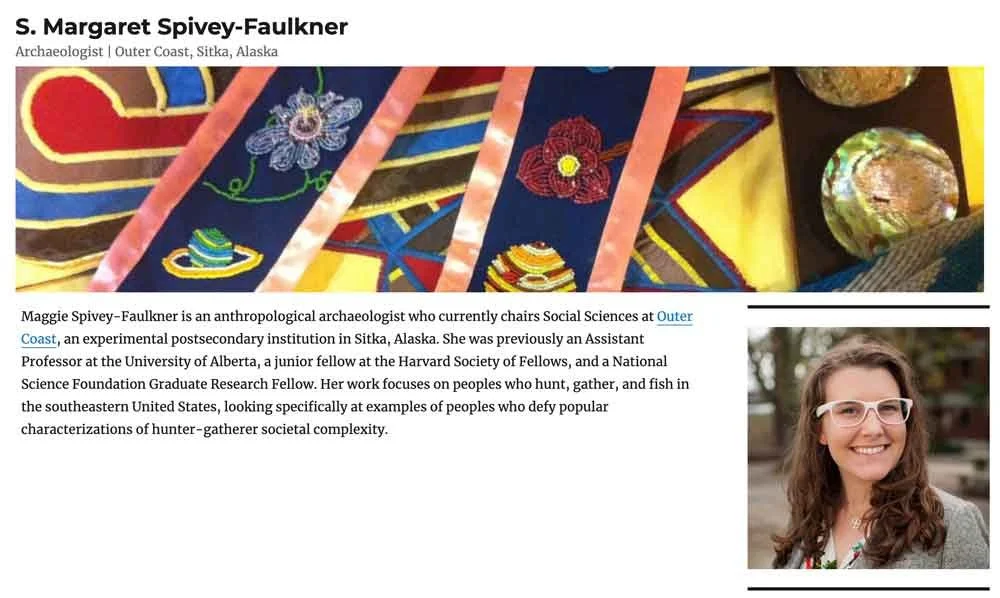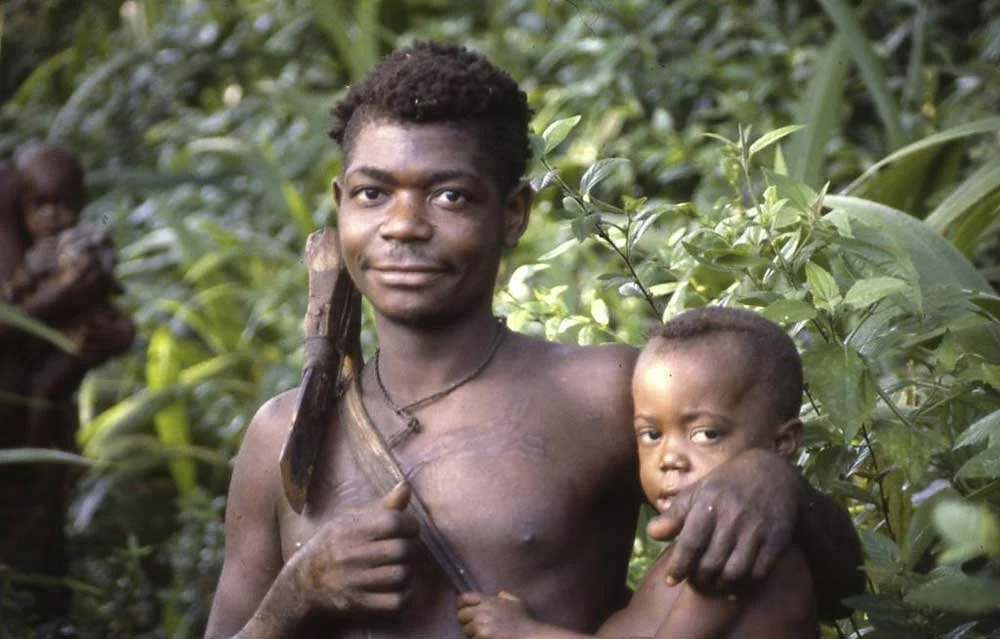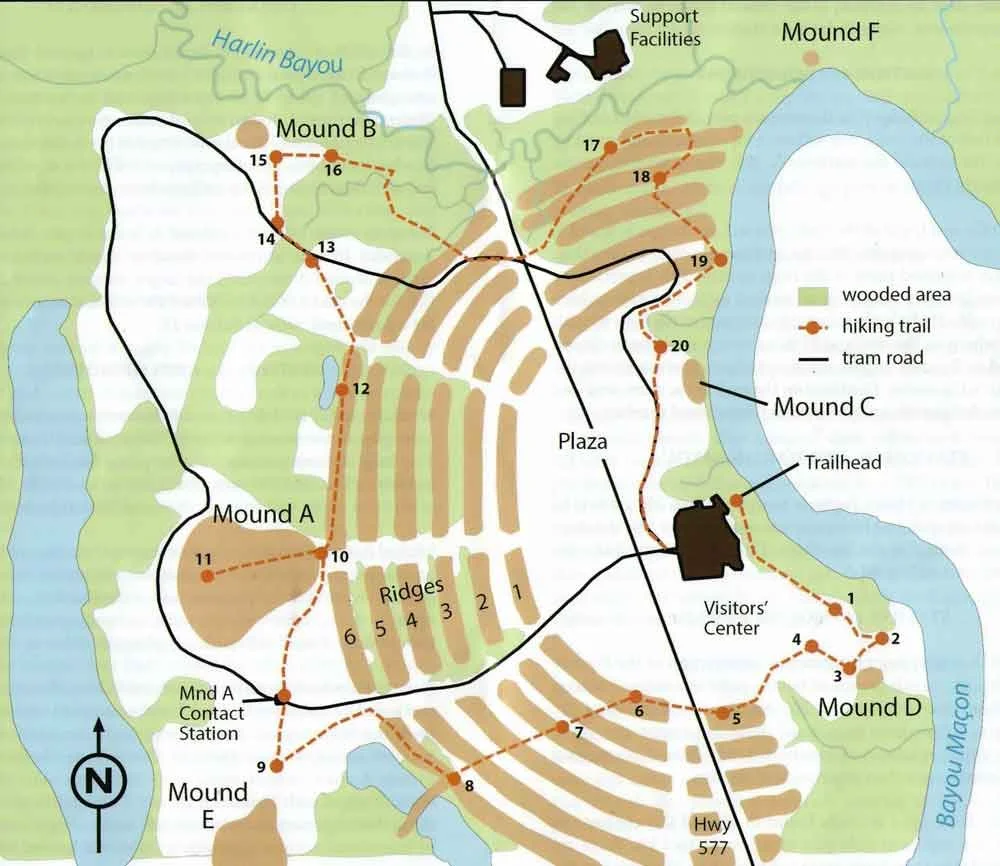PART 2
THE AMERICAS: POVERTY POINT
Poverty Point is located along which river? (Bonus: In what state can Poverty Point be found?)
How long have humans been on Earth?
What do we call peoples who got their food by hunting animals, fishing, and gathering plants?
How long ago did the Poverty Point people build the largest set of earthworks and mounds in all of North America?
For how many years did the Poverty Point peoples work on their earthworks?
The Poverty Point plaza was huge (about 43 acres). How many American football fields could fit in this plaza?
What was “the dock”?
How many different styles of stone spear points and dart tips have archeologists found?
What are Poverty Point Objects?
Why might Poverty Point have been built?
• Read •
PART 2
THE AMERICAS: POVERTY POINT
Poverty Point Culture
The Poverty Point culture was located along the Mississippi River in what is today the United States.
Who Were the First People?
Humans have lived on Earth for 300,000 years.
For most of that time, people got their food by hunting animals, fishing, and gathering plants. The were called hunter-gatherers.
Only about 10,000 years ago did people start farming. Before farming, people lived in small groups and moved around to find food.
The Amazing Site of Poverty Point
About 3,100 years ago, a group of hunter-gatherers in what is now Louisiana built something incredible. They created the largest set of earthworks and mounds in all of North America. This place is called Poverty Point, and it's still amazing to see today.
What makes Poverty Point so special is that it was built by people who didn't farm. Most scientists think you need farming to build big monuments because farming gives people extra time.
But the people at Poverty Point proved this wrong. They built the greatest monument ever created by hunter-gatherers anywhere in the world.
Building Poverty Point
The community at Poverty Point didn't build everything at once.
Starting about 3,700 years ago, they worked for 600 years to create their amazing site.
They built six different mounds, starting with Mound B, then adding others over time. Mound A was the last and biggest mound they built.
Besides the mounds, the people also built six curved ridges that formed a giant semi-circle around a central plaza.
• Reconstruction of the Central District of the Poverty Point Site about 1000 B.C.
The plaza was huge - about 43 acres, which is bigger than 30 football fields.
Everything was carefully planned and built. They even had a special area called "the dock" where people could beach their canoes when they first arrived.
Inside the plaza, the people built large wooden circles.
Some of these structures were 60 meters across - that's bigger than half a football field. The curved ridges around the plaza were where most of the daily activities happened.
What Did People Do There?
Scientists have found thousands and thousands of artifacts at Poverty Point.
Most of these objects were found on top of and around the curved ridges. This tells us that people were very busy on the ridges, but we're not sure if families lived there for their whole lives or just visited for certain times.
The people at Poverty Point made and used many different tools.
They had at least 16 different styles of spear points and dart tips made from stone. They made stone axes to chop down trees for building and for firewood. They also made thousands of tiny stone blades, probably for working with animal hides.
One of the most interesting things about Poverty Point is the special clay balls the people made.
These are called Poverty Point Objects, and archaeologists have found them everywhere at the site. The people heated these clay balls and used them for cooking instead of rocks. This was smart because there weren't many rocks in the area where they lived.
A Place for Many People
Poverty Point wasn't just a small village.
The artifacts show that hundreds, maybe even thousands of people came there at certain times. The people brought materials from far away places to make their tools and objects.
This shows that Poverty Point was an important place that connected many different groups of people.
Scientists think Poverty Point wasn't built in the best location if you only cared about practical things like farming or trading. There were better places nearby, like Vicksburg, that would have been easier to live in.
This makes scientists think that Poverty Point was built for special, important reasons beyond just everyday life.
Why Was It Built?
Many Native American cultures believe that everything in the world is connected. When something goes wrong in nature, people have a responsibility to help fix it. Scientists think this belief might explain why Poverty Point was built.
Between 3,500 and 3,300 years ago, there were major changes in the climate. Rivers stopped flowing normally, coastlines changed, and rain patterns were different.
Right during this time of environmental change, the people built Mound A, the biggest mound at Poverty Point.
The building of Mound A happened very quickly. Scientists think it might have been built in just 90 days or less.
• LiDAR image of Poverty Point
This would have taken an enormous amount of work and cooperation. Interestingly, no one lived on top of Mound A, and there are no artifacts around it.
This suggests it wasn't built for a chief or for parties, but for something more spiritual.
The Mystery of Leaving
After all their hard work building Poverty Point, something surprising happened. Around 1100 BCE, the people stopped living there and never came back. They didn't abandon it because of war or disaster - they just left.
A Native American archaeologist named Maggie Spivey-Faulkner has an interesting idea about this.
She calls it a "curated absence." She thinks the people left Poverty Point empty on purpose because it had become holy ground. By keeping it empty, they were showing respect for the sacred work they had done there.
Why Poverty Point Matters Today
Poverty Point shows us that our ancestors could do amazing things, even without farming or cities. It proves that hunter-gatherer societies could be much more complex and organized than we once thought.
• Hunter-gatherer peoples can still be found today.
The people who built Poverty Point had incredible social skills, could organize large groups, and created trade networks that reached across great distances.
Poverty Point is unique in the world.
There's nothing else quite like it anywhere. It reminds us that archaeology isn't just about finding old objects - it's about understanding the stories of people who lived long ago. As scientists continue to study Poverty Point, they keep discovering new things that change how we think about the past.
The story of Poverty Point teaches us that people have always been capable of great things when they work together for something they believe in. It shows us that caring for the environment and responding to climate change isn't new - people have been doing it for thousands of years.
Agriculture - the practice of farming and growing crops for food
Archaeologist - a scientist who studies the past by looking at old objects and remains
Artifacts - objects made by people in the past, like tools, pottery, or weapons
Cosmos - the universe; everything that exists
Curated - carefully chosen and organized; specially maintained
Custodian - someone who takes care of something important
Earthworks - large structures made of dirt and earth, like mounds or ridges
Equivocal - unclear or uncertain; having more than one possible meaning
Hunter-gatherers - people who get their food by hunting animals and gathering plants instead of farming
Incumbent - required or necessary to do something
Monument - a structure built to remember something important or to honor someone
Mounds - large hills or piles of earth built by people
Phenomenon - something unusual or remarkable that can be observed
Projectile points - sharp stone tips used on spears, arrows, or darts
Residue - what is left behind after something happens
Revelation - a surprising discovery or understanding of something important
Sophisticated - complex and advanced; showing great skill or knowledge
Staggering - amazingly large or impressive
Terraformed - land that has been changed or shaped by people
Ubiquitous - found everywhere; very common
► COMPREHENSION QUESTIONS
— please answer with complete sentences
Poverty Point is located along which river? (Bonus: In what state can Poverty Point be found?)
How long have humans been on Earth?
What do we call peoples who got their food by hunting animals, fishing, and gathering plants?
How long ago did the Poverty Point people build the largest set of earthworks and mounds in all of North America?
For how many years did the Poverty Point peoples work on their earthworks?
The Poverty Point plaza was huge (about 43 acres). How many American football fields could fit in this plaza?
What was “the dock”?
How many different styles of stone spear points and dart tips have archeologists found?
What are Poverty Point Objects?
Why might Poverty Point have been built?
► From EITHER/OR ► BOTH/AND
► FROM Right/Wrong ► Creative Combination
THESIS — Argue the case…
ANT-THESIS — Argue the case…
SYN-THESIS — Create a better solution…


